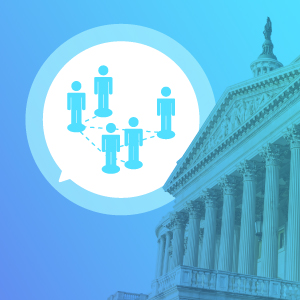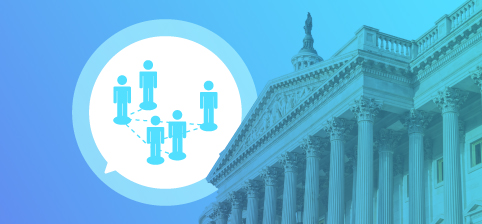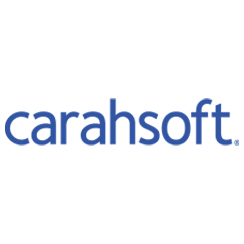Carahsoft recently hosted the 11th Annual Government Customer Experience & Engagement Seminar. The virtual seminar discussed how agencies can transform customer experience (CX) and satisfaction and increase constituent engagement across federal, state, and local government agencies. This session featured insights and statistics from industry-leading panelists on the importance of multichannel communication outreach in the federal government like websites, social media and email to provide information to all demographics and improve constituent engagement.
Websites, social media, email, text and other multichannel communications have become essential means for government agencies to reach constituents, growing more popular during the pandemic. As a result, many agencies developed important best practices around using online media, but others are still struggling to identify the best ways to make it effective.
When looking to improve outreach, the first step is to collect information about what you are currently doing and how effective it is. Analytics platforms can help you evaluate your presence and how well you are communicating your message. The next step is to “listen” to those accounts to discover constituents’ biggest areas of concern.
During the first phase of the pandemic, government communications had more to do with getting information out as quickly and accurately as possible. But since then the purpose of outreach has shifted. Now, agencies need to understand constituents’ concerns, taking different tone in terms of educating, communicating, and, most importantly, listening.
Multichannel Outreach
Every digital channel is important because agencies want to meet people where they are—rather than requiring them to use unfamiliar platforms. So agencies need to provide information via websites, email, phones, social media, and in person. Enlarging their digital footprints has encouraged greater participation by younger audiences who weren’t engaged with their governments before. However, agencies also need to reach those on the other side of the digital divide.
 A multichannel approach is critical to reach all demographics. According to the panel, social media penetration is over 90% of the US population, and approximately 60% of Facebook users see it as a primary source of news. Platforms like Facebook and Twitter are designed to allow users to ask and answer questions and share information. But TikTok, Instagram, etc. are more about visual representation of quick, short messages.
A multichannel approach is critical to reach all demographics. According to the panel, social media penetration is over 90% of the US population, and approximately 60% of Facebook users see it as a primary source of news. Platforms like Facebook and Twitter are designed to allow users to ask and answer questions and share information. But TikTok, Instagram, etc. are more about visual representation of quick, short messages.
Digital channels allow agencies to regain some two-way communication opportunities through virtual meetings, social media engagement, etc. Agencies are also starting to personalize website and social media material for different groups. They look at specific communities to evaluate which visualizations, dashboards, or websites will resonate with those audiences.
Setting Up a Social Media Communication Plan
If your agency doesn’t already have a social media presence, there is no reason not to get it started; it can help you prepare for the next crisis. Agencies can be the source of truth for the public, particularly in combatting misinformation or imposter pages. According to the panel, although social media can be confusing and intimidating, it is an incredibly important tool that many saw become more important in 2020 once people lost in-person access to agencies.
It’s important to have a plan in place for how you will deploy and support each social media channel. Starting a channel is easy, but you also need the staffing to be able to respond in that channel and learn from it. People will start asking questions and giving opinions immediately, and agencies must be prepared with a communication response strategy to handle that.
You don’t want to over promise and under deliver; that’s a recipe for disaster. The worst thing you can do is get excited, encourage people to talk to you, and then ignore it for two weeks. If you only have one part-time employee answering questions, that creates distrust. The average Twitter user wants a response in 45 minutes, the panelists said. For example, New York City has a staff of more than ten people who monitor the city’s media every day. Timely response helps create trust.
You should ensure that communications are consistent throughout your channels—with unified messaging. You also need to look at your social media holistically—across all platforms—when evaluating the effectiveness of your communications strategy.
Short vs. Long Form Communication
However, agencies need to find the balance between short-form (Twitter, Instagram) and long-form communication channels (video, Facebook, press conferences, etc.) where agencies can give more information about complicated topics. Discussions about social justice or vaccine hesitancy, for example, can’t be contained in a Twitter response; that needs to be a longer, two-way conversation. Facebook Live or LinkedIn Live can provide opportunities for constituents to talk directly with public health officials.
Agencies can create a web of communication that allow short-form communications to connect back to longer forms. Short-form engagement mechanisms like Twitter or Instagram become portals for the long-form channels where agencies can provide additional information or address complicated concerns.
View our session to learn more from industry speakers discussing the future of government outreach, constituent engagement, digital transformation, customer experience, and service delivery initiatives.







